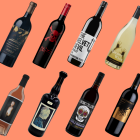The world of wine is vast. With thousands upon thousands of labels on the market you could probably enjoy a different bottle of wine every day for the rest of your life and never get through them all! So for those new to the wine landscape, the sheer amount of variety and choice can be somewhat intimidating. But pare it all back and every wine fits neatly into one of just nine categories – becoming familiar with these will make your wine journey much easier to navigate.
Sparkling wines
Sparkling wines are some of the most time and process-intensive wines in the world. Their special identifier is, of course, their elegant bubbles, but flavours can be broad, including citrus, peach and toast. The top three sparkling wine heavyweights are Champagne, Prosecco and Cava. Serve ice cold with cheese, seafood and salads.
Light-bodied white wines
Light-bodied whites are crisp, fresh and frequently described as ‘zesty’. The best examples of these wines are often produced in cooler climates, and should be drunk young. Flavours typically include citrus, melon, apple and peach, with popular varieties including Sauvignon Blanc, Pinot Gris and Soave. Because of their easy-drinking style light-bodied whites pair well with most foods, although they do well with nutty cheeses, shellfish and herby dishes.
Full-bodied white wines
Full-bodied whites differ from their lighter counterparts predominantly because of the winemaking techniques involved – they tend to be oak-aged, for example. This results in a richer, smoother taste with a subtle creaminess, which makes these wines a good choice for red wine lovers. The classic full-bodied white is Chardonnay, although Viognier is popular, too. They will pair well with probably the widest range of foods, although they’re not quite as easy-drinking as lighter whites – they’re not typically a picnic wine, for example.
Aromatic (sweet) white wines
This category of whites can technically be dry or sweet, but are characterised by their explosive, perfumed aromas, which often creates a certain sweetness on the palate. Aromatic grapes are some of the oldest in the world (Cleopatra was known for her love of Muscat, for example) but the wines they produce are some of the most affordable. Riesling, Gewurztraminer, Muscat Blanc and Chenin Blanc are all popular choices, and pair well with particularly flavoursome dishes such as Indian cuisine and pungent cheeses.
Rose
Rose wines are identifiable through their pale red colouring and are not, contrary to popular belief, made simply by ‘mixing red and white grapes together’ – there’s a true art to making decent rose. The wine can be made in all styles, sweet or dry, with a great many types of grape, although it’s frequently produced around the south of France and in Mediterranean countries. Garnacha Rose, Sangiovese Rose and Pinot Noir Rose are all popular sweeter styles, although dryer Roses made from Grenache and Syrah are well worth trying for their subtle, elegant flavours.
Light-bodied red wines
Light-bodied reds are typically paler in colour than other red styles (you’ll be able to see through them in a glass) and have much lighter tannins, which makes them very drinkable. Common flavours include cranberry, blackberry and cherries, with Pinot Noir and Gamay being two of the most popular varietals. These wines pair wonderfully with cured meats, game and cheeses.
Medium-bodied red wines
Because of their decent acidity and tannin levels, medium-bodied reds boast a lot of flavour, making them among the most ‘food-friendly’ wines on offer – they’ll pair well with almost everything, even salad. Grenache, Sangiovese, Merlot, Zinfandel, Montepulciano and Cabernet Franc are some of the more popular varieties, although you’ll often find variations in style because of regional differences in growing and winemaking – a good reason to sample a wider variety!
Full-bodied red wines
These heavyweights are the deepest, darkest and most tannic of all red wines. Flavours typically include tobacco, cherry, cedar, black pepper and currants, so they’re not necessarily an ‘easy-drinking’ variety. However, while tannins can taste bitter and have a ‘drying’ effect in the mouth, they also bind to the protein in saliva to have a palate-cleansing effect, so they pair fabulously with juicy, fatty meats and barbecued food. Popular bold reds include Malbec, Cabernet Sauvignon, Syrah and Montepulciano.
Dessert/fortified wines
Dessert wines may be an acquired taste for some, but back in the 1800s they were among the most popular styles of wine in the world. Like aromatic whites, they can be sweet or dry, but they typically have a high alcohol and sugar content, so they’re designed to be enjoyed in small amounts. Port, Sherry and Madeira are popular styles, often served at the end of a meal.






